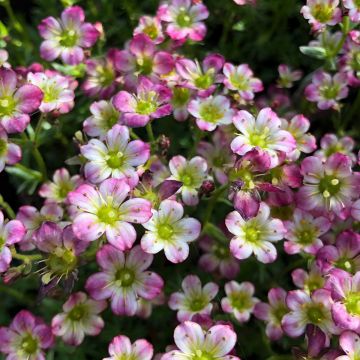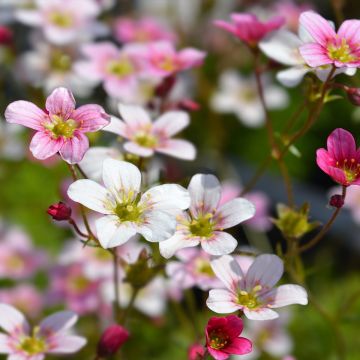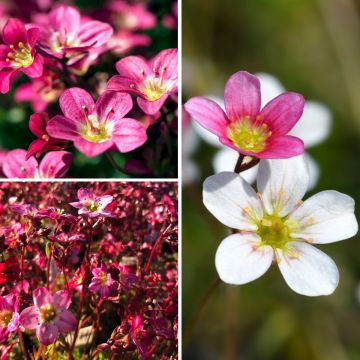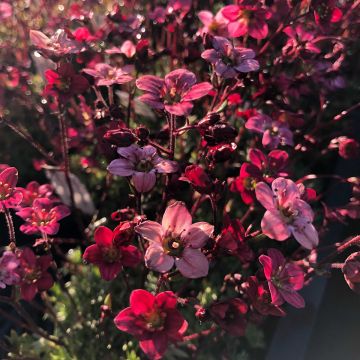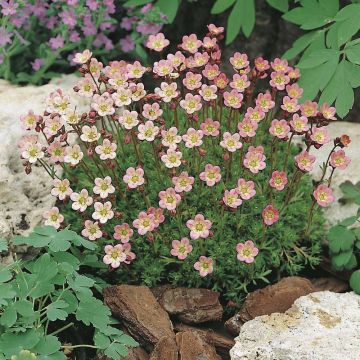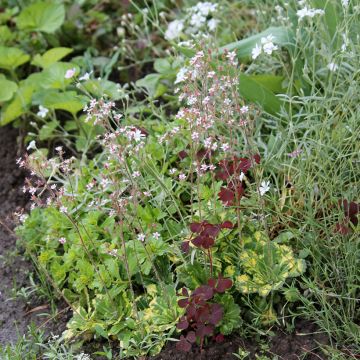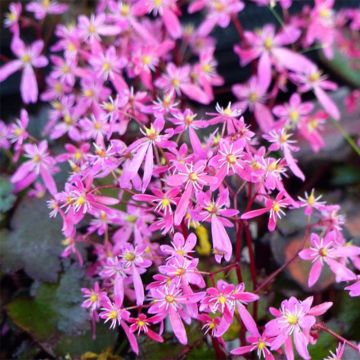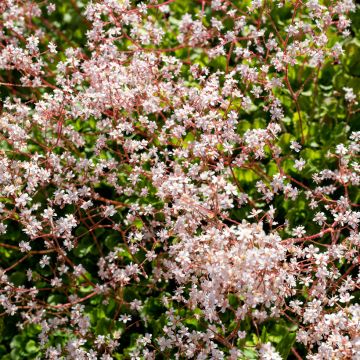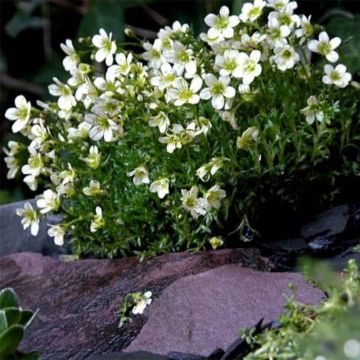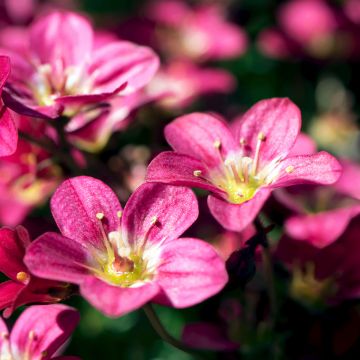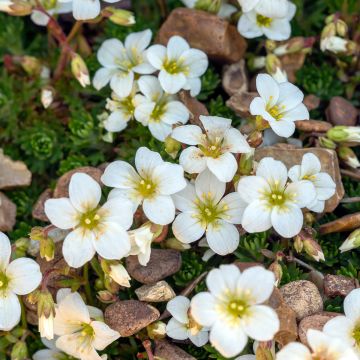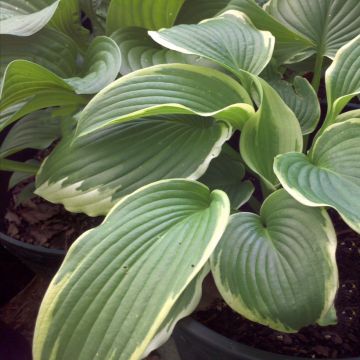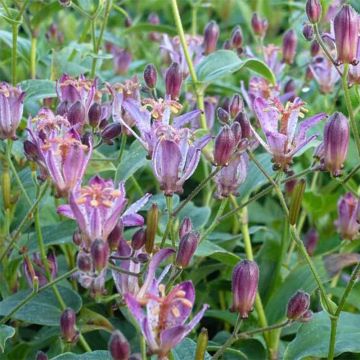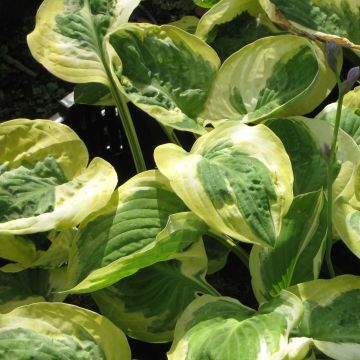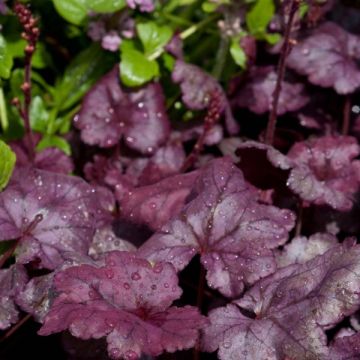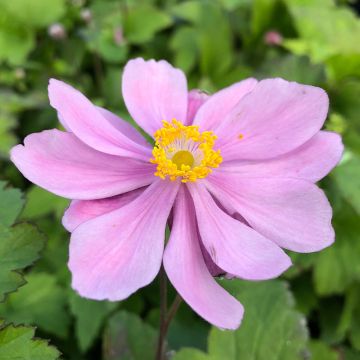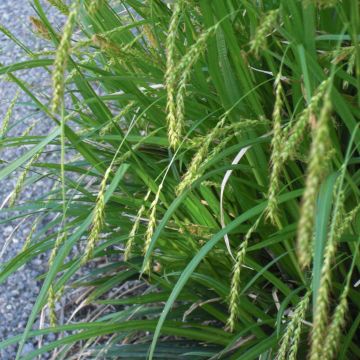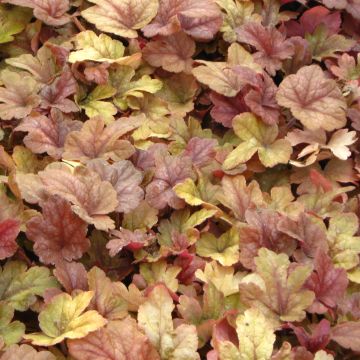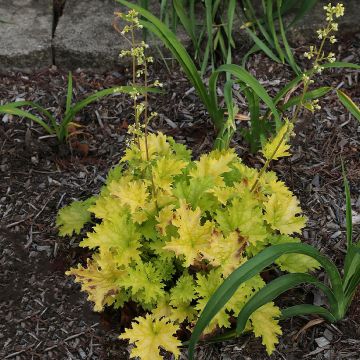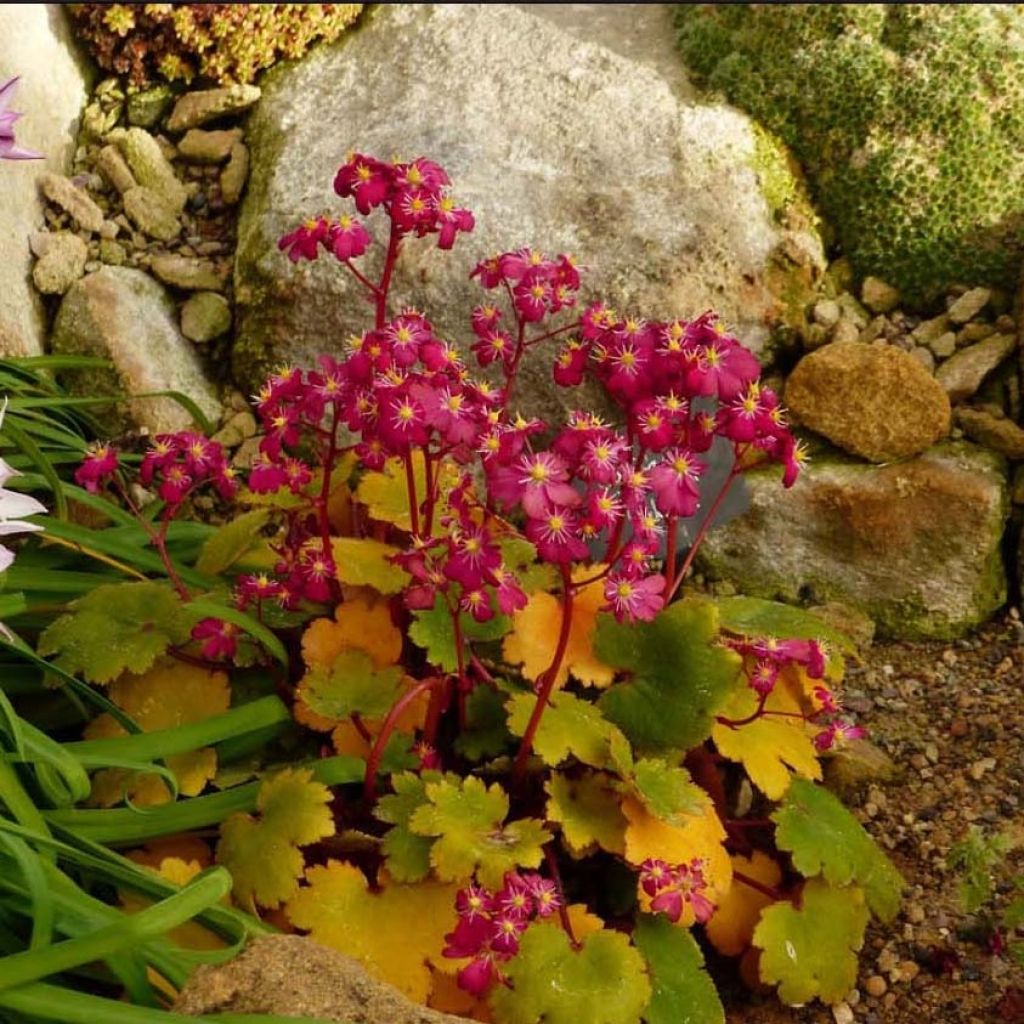

Saxifraga fortunei Gokka - Saxifrage
Saxifraga fortunei Gokka
Saxifraga fortunei Gokka
Fortune Saxifrage
Why not try an alternative variety in stock?
View all →This plant carries a 12 months recovery warranty
More information
We guarantee the quality of our plants for a full growing cycle, and will replace at our expense any plant that fails to recover under normal climatic and planting conditions.
From €5.90 for pickup delivery and €6.90 for home delivery
Express home delivery from €8.90.
Does this plant fit my garden?
Set up your Plantfit profile →
Description
Saxifraga fortunei 'Gokka' is a delicate perennial for cool shade, producing numerous raspberry pink flowers in late summer and autumn that hang from long, airy stems. This sculptural plant is well suited to shady rockeries and woodlands, in moist but well-drained substrate with an acidic tendency. It brings welcome colours at a time when the garden is falling asleep. It also looks beautiful in containers.
Saxifraga fortunei belongs to the Saxifragaceae family, a large botanical family that also includes rodgersia, astilbes, heuchera, and bergenia. Native to Japan, this plant grows in damp woodlands, in moss or on dripping rocks near fast-flowing streams. It forms a small compact clump of lobed leaves, often of a beautiful bright green. The leaves are thick and shiny, very similar to a succulent plant. Between September and November, it bears branched panicles of intriguing, asymmetrical flowers, composed of 3 short petals at the top of the flower, and 2 much longer ones at the lower part. Carried well above the foliage, these elegant inflorescences bring an unmistakable Japanese charm.
The 'Gokka' variety is characterised by raspberry pink flowers, sometimes tending towards red. The clump will reach about 25 to 30cm (10 to 12in) in height when in flower, with a spread of 25cm (10in).
Beautiful and delicate, Saxifraga 'Gokka' is quite demanding in terms of its growing conditions. It requires acidic (lime-free), humus-rich, flexible and perfectly drained soil. It is extremely sensitive to root rot in wet soil during winter. Avoid covering the base with dead leaves, which could retain too much moisture. However, the substrate should not dry out during the summer either, as this leads to rapid wilting of the plant and a noticeable decrease in autumn flowering. We do not recommend attempting to grow this species in heavy and clayey soil. Although it is hardy to -15°C (5°F), the plant is quite sensitive to late frosts, which can seriously damage its young foliage. Therefore, it is ideal to place your saxifrage in dense woodland, in shade or partial shade, under the cover of bushes that will protect it from these frosts. It also tolerates the proximity of not too powerful roots, as long as the soil does not dry out.
Saxifraga 'Gokka' will also work wonders in the foreground of a Japanese-style shady rockery, alongside small ferns like Athyrium niponicum 'Red Beauty', Athyrium otophorum var. okanum, or the grass Hakonechloa macra, all at the base of a Japanese maple like Acer palmatum 'Bloodgood'. It is also a beautiful accent plant used in containers on a sheltered patio.
Report an error about the product description
Saxifraga fortunei Gokka in pictures
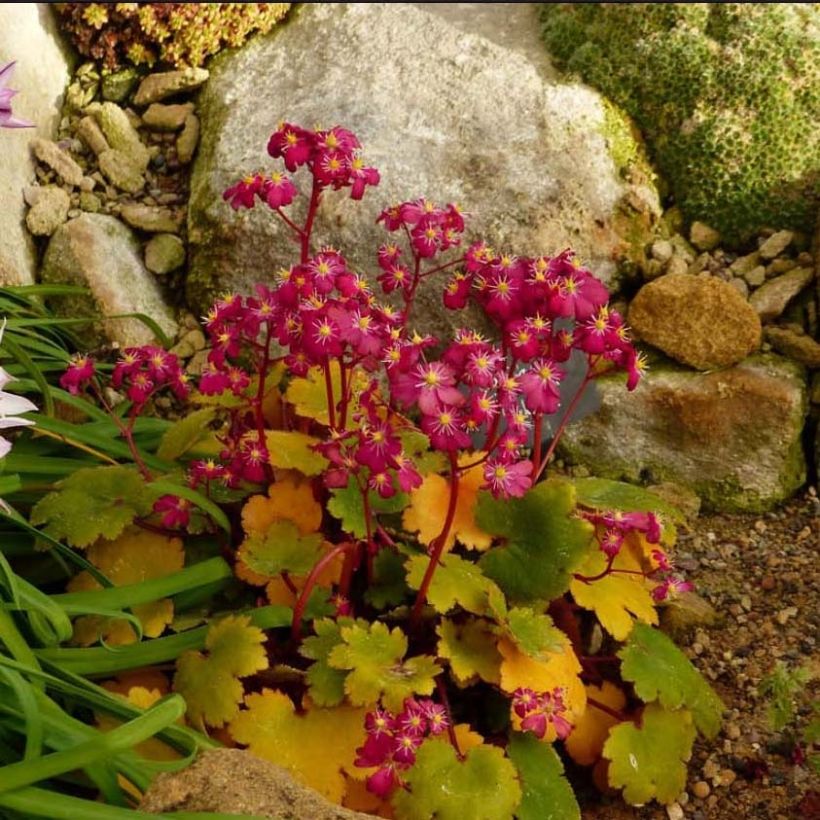

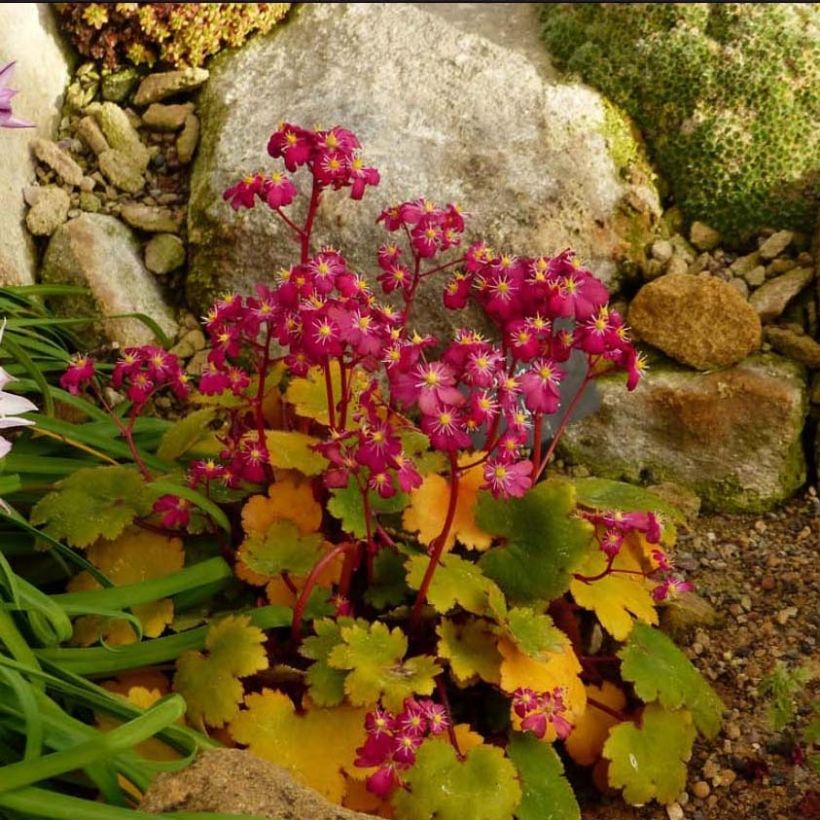

Flowering
Foliage
Plant habit
Botanical data
Saxifraga
fortunei
Gokka
Saxifragaceae
Fortune Saxifrage
Cultivar or hybrid
Other Saxifraga
Planting and care
Plant from September to March. It appreciates moist and humus-rich soils in the undergrowth and does not tolerate excessive moisture in winter or drought in summer. However, it tolerates root competition from trees and bushes quite well, as long as the soil does not dry out in summer. Choose a semi-shaded to shaded exposure, always keeping it moist. If planted at the base of deciduous trees or bushes, clean the clump if autumn leaves cover it. It is susceptible to attacks from aphids, gastropods, and vine weevils.
Planting period
Intended location
Care
This item has not been reviewed yet - be the first to leave a review about it.
Shade-loving perennials
Haven't found what you were looking for?
Hardiness is the lowest winter temperature a plant can endure without suffering serious damage or even dying. However, hardiness is affected by location (a sheltered area, such as a patio), protection (winter cover) and soil type (hardiness is improved by well-drained soil).

Photo Sharing Terms & Conditions
In order to encourage gardeners to interact and share their experiences, Promesse de fleurs offers various media enabling content to be uploaded onto its Site - in particular via the ‘Photo sharing’ module.
The User agrees to refrain from:
- Posting any content that is illegal, prejudicial, insulting, racist, inciteful to hatred, revisionist, contrary to public decency, that infringes on privacy or on the privacy rights of third parties, in particular the publicity rights of persons and goods, intellectual property rights, or the right to privacy.
- Submitting content on behalf of a third party;
- Impersonate the identity of a third party and/or publish any personal information about a third party;
In general, the User undertakes to refrain from any unethical behaviour.
All Content (in particular text, comments, files, images, photos, videos, creative works, etc.), which may be subject to property or intellectual property rights, image or other private rights, shall remain the property of the User, subject to the limited rights granted by the terms of the licence granted by Promesse de fleurs as stated below. Users are at liberty to publish or not to publish such Content on the Site, notably via the ‘Photo Sharing’ facility, and accept that this Content shall be made public and freely accessible, notably on the Internet.
Users further acknowledge, undertake to have ,and guarantee that they hold all necessary rights and permissions to publish such material on the Site, in particular with regard to the legislation in force pertaining to any privacy, property, intellectual property, image, or contractual rights, or rights of any other nature. By publishing such Content on the Site, Users acknowledge accepting full liability as publishers of the Content within the meaning of the law, and grant Promesse de fleurs, free of charge, an inclusive, worldwide licence for the said Content for the entire duration of its publication, including all reproduction, representation, up/downloading, displaying, performing, transmission, and storage rights.
Users also grant permission for their name to be linked to the Content and accept that this link may not always be made available.
By engaging in posting material, Users consent to their Content becoming automatically accessible on the Internet, in particular on other sites and/or blogs and/or web pages of the Promesse de fleurs site, including in particular social pages and the Promesse de fleurs catalogue.
Users may secure the removal of entrusted content free of charge by issuing a simple request via our contact form.
The flowering period indicated on our website applies to countries and regions located in USDA zone 8 (France, the United Kingdom, Ireland, the Netherlands, etc.)
It will vary according to where you live:
- In zones 9 to 10 (Italy, Spain, Greece, etc.), flowering will occur about 2 to 4 weeks earlier.
- In zones 6 to 7 (Germany, Poland, Slovenia, and lower mountainous regions), flowering will be delayed by 2 to 3 weeks.
- In zone 5 (Central Europe, Scandinavia), blooming will be delayed by 3 to 5 weeks.
In temperate climates, pruning of spring-flowering shrubs (forsythia, spireas, etc.) should be done just after flowering.
Pruning of summer-flowering shrubs (Indian Lilac, Perovskia, etc.) can be done in winter or spring.
In cold regions as well as with frost-sensitive plants, avoid pruning too early when severe frosts may still occur.
The planting period indicated on our website applies to countries and regions located in USDA zone 8 (France, United Kingdom, Ireland, Netherlands).
It will vary according to where you live:
- In Mediterranean zones (Marseille, Madrid, Milan, etc.), autumn and winter are the best planting periods.
- In continental zones (Strasbourg, Munich, Vienna, etc.), delay planting by 2 to 3 weeks in spring and bring it forward by 2 to 4 weeks in autumn.
- In mountainous regions (the Alps, Pyrenees, Carpathians, etc.), it is best to plant in late spring (May-June) or late summer (August-September).
The harvesting period indicated on our website applies to countries and regions in USDA zone 8 (France, England, Ireland, the Netherlands).
In colder areas (Scandinavia, Poland, Austria...) fruit and vegetable harvests are likely to be delayed by 3-4 weeks.
In warmer areas (Italy, Spain, Greece, etc.), harvesting will probably take place earlier, depending on weather conditions.
The sowing periods indicated on our website apply to countries and regions within USDA Zone 8 (France, UK, Ireland, Netherlands).
In colder areas (Scandinavia, Poland, Austria...), delay any outdoor sowing by 3-4 weeks, or sow under glass.
In warmer climes (Italy, Spain, Greece, etc.), bring outdoor sowing forward by a few weeks.

































